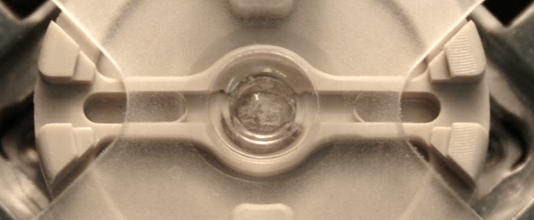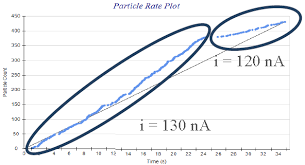How do I manage fluid flow rate for larger nanopores (NP1000 and larger)?
Fluid can flow through large pores very quickly. Even if no pressure is applied using the VPM, gravity can cause the sample fluid to drain from the upper fluid cell to the lower fluid cell (of the NP4000 nanopore) in a matter of minutes.
Follow the recommended steps below to control the rate of fluid flow:
- Do not use applied pressures above 5 mbar for large pores. In addition to the inherent pressure head in the fluid cell (equivalent to ~0.45 mbar), this is sufficient to drive particles through the pore.
- If necessary apply a small vacuum (up to 0.4 mbar) in order to reduce the total pressure and hence the fluid flow.
- To ensure a consistent pressure head from sample to sample:
- Remove excess fluid from the bottom fluid cell, such that all of the fluid is contained underneath the pore material, with a fluid meniscus on each side of the central well.

- Remove excess fluid from the upper fluid cell (this can be done by removing the upper cell and tapping it against a tissue).
- Remove excess fluid from the bottom fluid cell, such that all of the fluid is contained underneath the pore material, with a fluid meniscus on each side of the central well.
The stable operating period can be determined by looking at the rate plot after the data has been analysed.
Tip
A constant (linear) rate plot indicates a largely stable pressure – measurements should only be taken for this time period.
A drop off in rate indicates a significant change in pressure:

